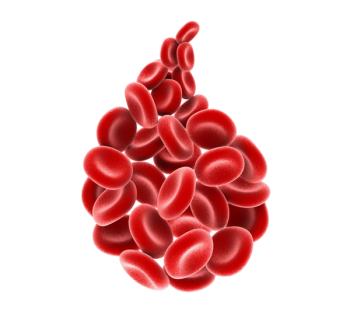
FDA Approves Osimertinib as Adjuvant Therapy Following Resection of NSCLC with EGFR Mutations
Full approval has been granted by the FDA to osimertinib (Tagrisso) for use as adjuvant therapy following tumor resection among patients with non–small cell lung cancer whose tumors have EGFR exon 19 deletions or exon 21 L858R mutations.
The FDA has approved osimertinib (Tagrisso) as adjuvant therapy after tumor resection in patients with non–small cell lung cancer (NSCLC) whose tumors harbor EGFR exon 19 deletions or exon 21 L858R mutations, as detected by an FDA-approved test, according to an FDA press release.1
Efficacy of osimertinib was demonstrated in the randomized, double-blind, placebo-controlled, phase 3 ADAURA trial (NCT02511106), which evaluated patients with EGFR exon 19 deletion or exon 21 L858R mutation–positive NSCLC who had complete tumor resection with or without prior adjuvant chemotherapy.2 Patients with resectable tumors, defined as stage IB to IIIA, were deemed eligible for the study if they had predominantly nonsquamous histology and EGFR exon 19 deletions or exon 21 L858R mutations identified prospectively from tumor tissue in a central laboratory by the cobas EGFR Mutation Test.
The primary end point was disease-free survival (DFS) in patients with stage II to IIIA disease according to investigator assessment. Secondary end points included DFS in the overall population of patients with stage IB to IIIA disease, overall survival (OS), and safety.
Overall, 682 patients were randomized 1:1 to receive osimertinib at a dose of 80 mg orally once daily or placebo following recovery from surgery and standard adjuvant chemotherapy, if given.
At 24 months, 90% of the patients with stage II to IIIA disease in the osimertinib group (95% CI, 84%-93%) and 44% of those in the placebo group (95% CI, 37%-51%) were alive and free of disease (overall HR, 0.17; 99.06% CI, 0.11-0.26; P < .001). Median DFS was not reached (95% CI, 38.8-not calculable [NC]) in patients on the osimertinib arm compared with 19.6 months (95% CI, 16.6, 24.5) on the placebo arm.
Among the overall study population, 89% of the patients in the osimertinib group (95% CI, 85%-92%) and 52% of those in the placebo group (95% CI, 46%-58%) were alive and disease free at 24 months (overall HR, 0.20; 99.12% CI, 0.14-0.30; P < .001). Median DFS in the overall study population was also not reached (95% CI, NC-NC) in patients on osimertinib compared with 27.5 months (95% CI, 22-36) on the placebo arm.
Moreover, 98% of the patients in the osimertinib group (95% CI, 95%-99%) and 85% of those in the placebo group (95% CI, 80%-89%) were alive and did not have central nervous system disease at 24 months (overall HR, 0.18; 95% CI, 0.10 to 0.33).
OS data were immature; however, 29 patients had died (9 in the osimertinib group, 20 in the placebo group).
No new safety concerns were noted in the study. The most common (>20%) adverse events observed in patients taking osimertinib, including laboratory abnormalities, were lymphopenia, leukopenia, thrombocytopenia, diarrhea, anemia, rash, musculoskeletal pain, nail toxicity, neutropenia, dry skin, stomatitis, fatigue, and cough.
The FDA-recommended dose of osimertinib for adjuvant treatment of early-stage NSCLC is 80 mg orally once daily, with or without food, until disease recurrence or unacceptable toxicity or for up to 3 years.
References:
1. FDA approves osimertinib as adjuvant therapy for non-small cell lung cancer with EGFR mutations [news release]. Published December 18, 2020. Accessed December 18, 2020. https://www.fda.gov/drugs/drug-approvals-and-databases/fda-approves-osimertinib-adjuvant-therapy-non-small-cell-lung-cancer-egfr-mutations?utm_medium=email&utm_source=govdelivery
2. Wu Y, Tsuboi M, He J, et al. Osimertinib in resected EGFR-mutated non–small-cell lung cancer. N Engl J Med. 2020;383(18):1711-1732. doi: 10.1056/NEJMoa2027071
Newsletter
Stay up to date on recent advances in the multidisciplinary approach to cancer.



















































































